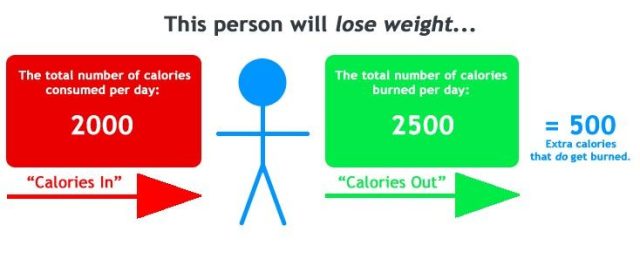Embarking on a weight loss journey can often feel overwhelming, especially with the myriad of advice and strategies available. At the heart of most successful weight loss plans, however, lies a simple principle: creating a calorie deficit. This means consuming fewer calories than your body uses, prompting it to tap into stored fat for energy. While this concept is straightforward, the path to achieving it can be challenging and deeply personal. In this guide, we’ll explore practical and sustainable ways to create a calorie deficit, tailored to fit your lifestyle and needs. Whether you’re just starting out or have been on this journey for a while, our aim is to provide you with the tools and understanding necessary to make informed, compassionate choices for your health. Let’s take this step together, with empathy and clarity, towards achieving your weight loss goals.
Understanding Calorie Deficit and Its Role in Weight Loss
Achieving a calorie deficit, where you consume fewer calories than your body burns, is a foundational principle in the journey of weight loss. This process encourages your body to tap into stored fat for energy, facilitating weight reduction over time. It’s essential to approach this concept with a balanced mindset, ensuring that nutritional needs are met while creating a manageable deficit. Here’s how you can effectively incorporate a calorie deficit into your routine:
- Understand Your Basal Metabolic Rate (BMR): This is the number of calories your body needs at rest to maintain basic physiological functions. Knowing your BMR can help you determine your daily calorie needs.
- Track Your Intake: Use apps or food diaries to monitor your daily calorie consumption. This helps in identifying areas where you can cut back without sacrificing nutrition.
- Choose Nutrient-Dense Foods: Focus on foods that provide more nutrients per calorie, like vegetables, lean proteins, and whole grains, to keep you full and satisfied.
| Activity Level | Estimated Calorie Needs |
|---|---|
| Sedentary | 1,800 – 2,200 calories/day |
| Moderately Active | 2,200 – 2,800 calories/day |
| Active | 2,400 – 3,000 calories/day |
Remember, the goal is to maintain a sustainable approach that does not compromise your health. Sudden, drastic cuts in calorie intake can be counterproductive, leading to fatigue and nutritional deficiencies. Strive for a gentle, steady reduction, and listen to your body’s cues to ensure you remain energetic and well-nourished throughout your weight loss journey.

Crafting a Balanced Diet Plan to Support Your Goals
To effectively achieve your weight loss goals, it’s essential to craft a diet plan that aligns with your daily energy needs while creating a calorie deficit. This means consuming fewer calories than your body expends. Here’s how to ensure your diet is balanced and supportive:
- Calculate Your Basal Metabolic Rate (BMR): Understanding your BMR helps you know how many calories your body needs at rest. Use online calculators or consult with a nutritionist to get an accurate number.
- Incorporate Nutrient-Dense Foods: Focus on whole foods such as fruits, vegetables, lean proteins, and whole grains. These provide essential nutrients and help keep you full longer.
- Portion Control: Pay attention to serving sizes to avoid overeating. Using smaller plates can help trick your brain into feeling satisfied with less food.
Here’s a simple example of a daily meal plan that might fit into a calorie deficit strategy:
| Meal | Food | Calories |
|---|---|---|
| Breakfast | Oatmeal with Berries | 300 |
| Lunch | Grilled Chicken Salad | 400 |
| Dinner | Stir-fried Tofu with Vegetables | 350 |
| Snacks | Apple and Almonds | 200 |
Balancing your diet is not just about cutting calories, but also ensuring you get the right nutrients to keep your body functioning optimally. Remember to listen to your body’s hunger signals and adjust your plan as needed.

Incorporating Exercise to Enhance Your Calorie Deficit
One of the most effective ways to amplify your calorie deficit is by integrating physical activity into your daily routine. Exercise not only burns calories but also boosts your metabolism, helping you achieve your weight loss goals more efficiently. Here’s how you can make exercise a powerful ally in your journey:
- Start Small: Begin with manageable activities like brisk walking or cycling. Gradually increase the intensity as your fitness level improves.
- Mix It Up: Incorporate a combination of cardio and strength training exercises. Cardio burns calories quickly, while strength training builds muscle, which can increase your resting metabolic rate.
- Consistency is Key: Aim for at least 150 minutes of moderate aerobic activity or 75 minutes of vigorous activity per week, as recommended by health experts.
To help you track your progress and stay motivated, consider the following sample exercise plan:
| Day | Activity | Duration |
|---|---|---|
| Monday | Brisk Walk | 30 minutes |
| Wednesday | Strength Training | 45 minutes |
| Friday | Yoga | 30 minutes |
| Saturday | Jogging | 30 minutes |
Remember, every step you take is a step towards a healthier you. Celebrate small victories and stay focused on your long-term goals. Your body will thank you for the effort and dedication!

Monitoring Progress and Adjusting Your Approach for Sustainable Results
To achieve sustainable weight loss, it’s crucial to continually monitor your progress and be ready to adjust your approach. This isn’t just about numbers on a scale; it’s about understanding how your body responds to the calorie deficit and making informed decisions based on that feedback. Here are some key strategies to help you fine-tune your journey:
- Track Your Metrics: Regularly record not just your weight, but also your measurements, energy levels, and mood. This holistic approach provides a more comprehensive picture of your progress.
- Listen to Your Body: Pay attention to signs of fatigue, hunger, or stress. These can indicate the need for dietary adjustments or changes in your exercise routine.
- Adjust Caloric Intake: If weight loss stalls, consider revisiting your calorie needs. Your body’s requirements may change as you lose weight, necessitating a recalibration of your calorie deficit.
| Metric | Frequency | Purpose |
|---|---|---|
| Weight | Weekly | Track overall trend |
| Measurements | Bi-weekly | Assess body composition changes |
| Energy Levels | Daily | Ensure adequate nutrition |
Remember, the journey to weight loss is not linear, and it’s normal to encounter plateaus. Being adaptable and patient with yourself will not only help you overcome these hurdles but will also empower you to maintain your results in the long term.








































